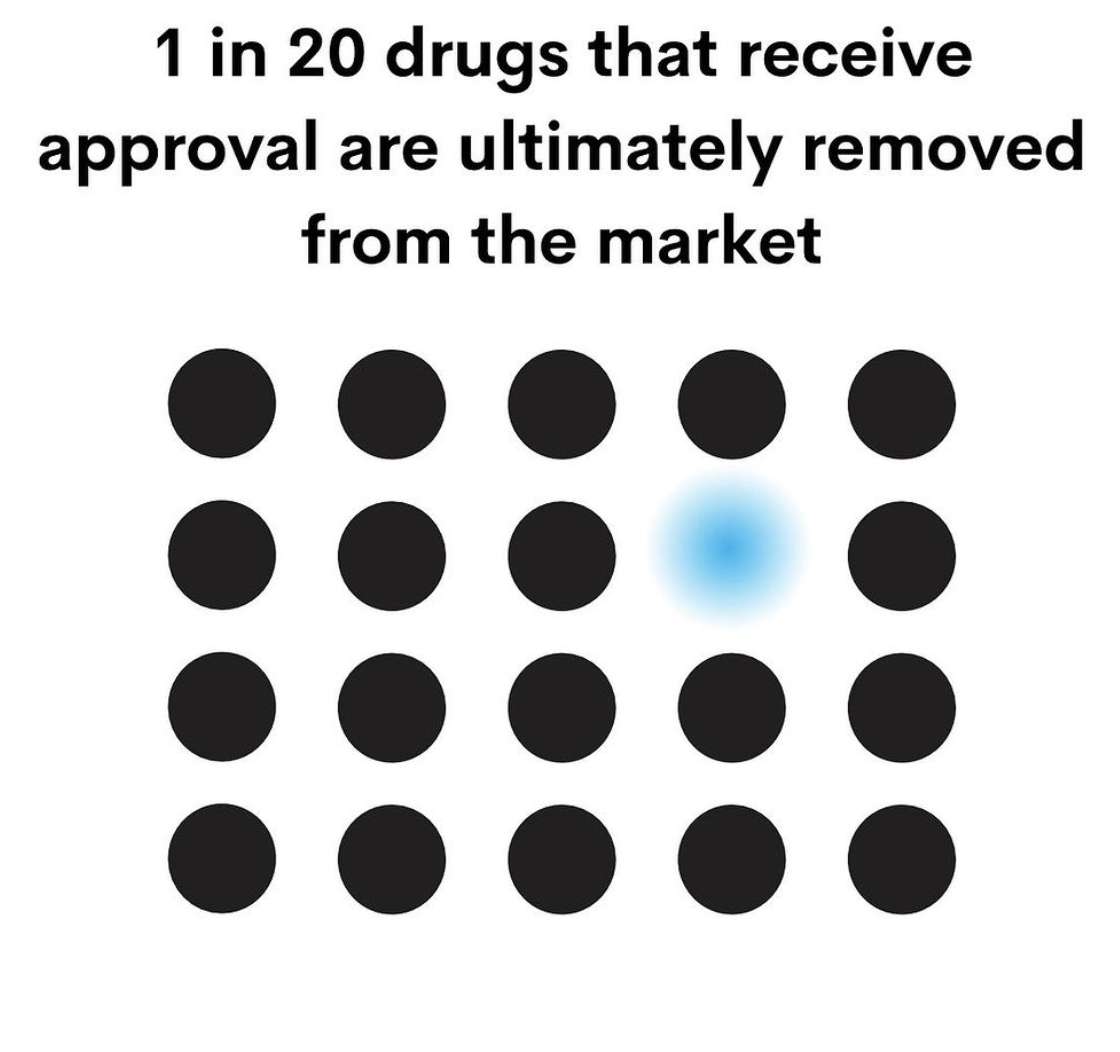1 in 20 Drugs that Get Approved Will Eventually Be Removed From Market
When a new drug comes to market, I’m pretty excited. After all, it’s proof of something I fundamentally believe in : good science can create better treatments and help more people lead fuller lives.
Whenever a new drug comes to market, I also remember something I learned many years ago: about 5 % of the time, the drug you are cheering about is going to eventually be removed from the market because of the harm it caused someone.
Why are drugs removed?
Drugs are removed from the market for several reasons. The top 4 reasons seem to be hepatotoxicity, cardiac disorders hypersensitivity and kidney disease nephrotoxicity. Of course, these are not the only reasons.
According to Craveiro et al, it tends to be the case report and spontaneous reporting that triggers the steps that ultimately lead to removal of a drug - rather than some piece of evidence from a well designed clinical trial. This is important for all of us to remember. Yes, completing that side effect reporting form does make a difference.
How long does it take to get a drug off the market?
A study in Canada by Lechin found that if a drug is going to be removed from the market, then 50% will be gone by 3.5 years and 50% will stay on longer than 3.5 years. A 2020 study by Craveiro NS et al. showed the delay could be even longer. In their study, the average time (rather than median) between the introduction of a drug and its withdrawal due to safety reasons was 20.3 years (SD±13.8).
Comment
Yes, some of the drugs we prescribe are going to eventually be found to harm people seriously enough that they get removed from the market. I’m hoping that number drops lower and lower and lower below 5 %. I still remember the day in 2009 that I learned that Raptiva was removed from the market. I still remember the day in 2009 that I learned that a drug I had prescribed (Raptiva) for psoriasis was removed from the market. The FDA approval of Raptiva was based on initial studies in approximately 2,700 patients - most received the drug for only a few months. Fast forward 6 years to 2009, after over 46,000 patients had received efalizumab. The world came to learn that 3-4 patients developed a rare and serious disease known as progressive multifocal leukoencephalopathy (PML) after using Efalizumab. 3 died. The only way that these side effects came to be realized was through reporting of side effects “after” the drug was released: doctors and patients saw the side effect and reported it regardless of whether they felt it was truly linked or not. Over time, it became clear it was linked.
The next 20 years will see a tremendous number of new treatments in our field. It’s going to be incredible. I’m exited to be part of this expansion of options for our patients.
But approximately 5 % of the time, we’re going to have it all wrong.
REFERENCE
Joel Lexchin. How safe are new drugs? Market withdrawal of drugs approved in Canada between 1990 and 2009. Open Med. 2014; 8(1): e14–e19. Published online 2014 Jan 28.
Craveiro NS et al. Drug Withdrawal Due to Safety: A Review of the Data Supporting Withdrawal Decision. . Curr Drug Saf. 2020;15(1):4-12. doi: 10.2174/1574886314666191004092520.
This article was written by Dr. Jeff Donovan, a Canadian and US board certified dermatologist specializing exclusively in hair loss.

